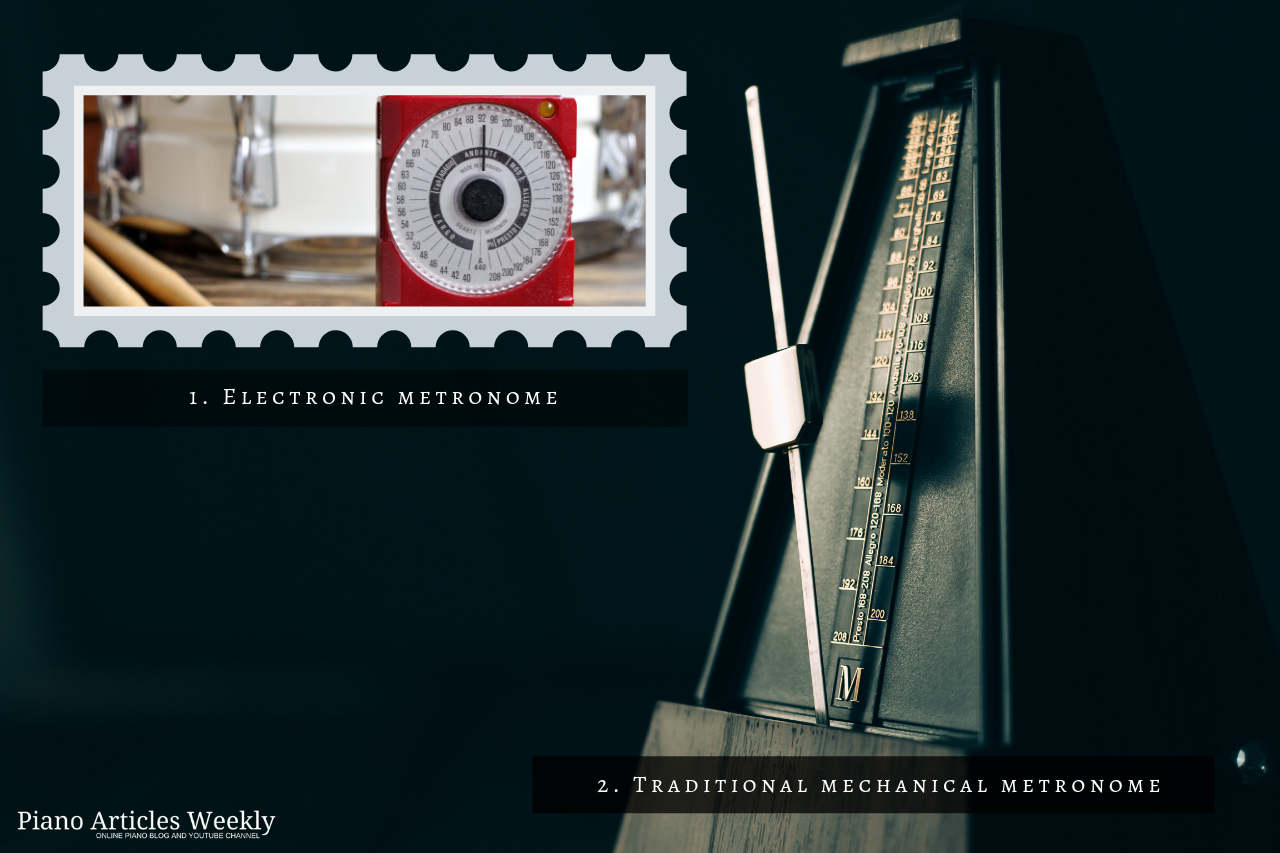Beginner’s theory
What is a metronome?
Metronome definition
A metronome is a mechanical or electronic device, or a software app for mobile phones and tablets, that produces ‘clicks’ (short sounds) at regular intervals.
Common usage
Metronome is commonly used in instrumental practice for establishing a musical tempo. Since its invention, composers have begun indicating an exact number of BMP for their pieces. Using a metronome allows us – sometimes hundreds of years after the composer’s death – to establish a similar or exact tempo to the one intended by the composer. This device is also used to develop the performer’s or student’s steady sense of pulse, control the piece’s speed, and highlight any inaccuracies of tempo during practice sessions. Modern composers have used it as a musical instrument, arranging their pieces with clicks as a part of the composition.
Typical features
Its speed can be adjusted and is commonly indicated in ‘beats per minute’ (BPM). On a traditional or electronic device (see the picture above), the adjustments can be made only in predefined steps between 40 and 208 BPM. Software apps tend to be more flexible with steps of a single beat per minute, often going up to 1000 BPM. The volume of electronic and software metronome can also be adjusted.
Origins
Word ‘metronome’ is a combination of two Greek-language words:
- Metron = measure
- Nomos = to regulate, law
The inventor
The metronome was invented by Nikolaus Winkel in 1812, but the most popular design was patented by Johann Maelzel three years later (Fallows, 2001).
How to use a metronome?
For a detailed guide on how to use a metronome, please read my article detailing 5 super-effective ways to improve your sense of rhythm and tempo control in practising of a musical instrument.
Reference list
Fallows, D. (2001, January 01). Metronome (i). Grove Music Online. Ed. Retrieved 10 Apr. 2019, from http://www.oxfordmusiconline.com.ezproxy.aim.edu.au/grovemusic/view/10.1093/gmo/9781561592630.001.0001/omo-9781561592630-e-0000018521.
